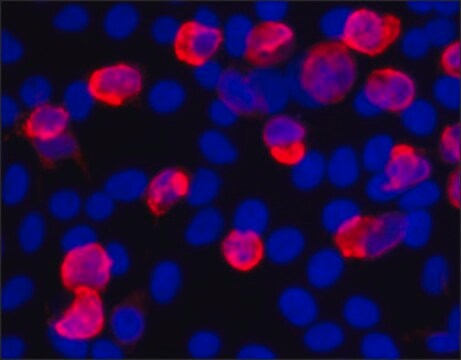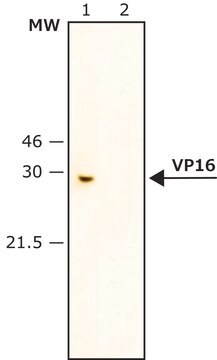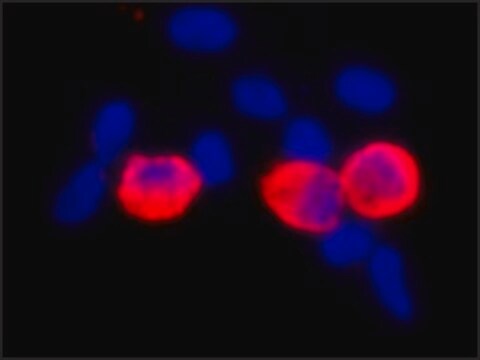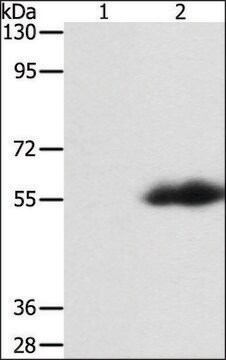Key Documents
V8137
Anti-V5 antibody produced in rabbit
IgG fraction of antiserum
Synonim(y):
Rabbit Anti-V5
About This Item
Polecane produkty
pochodzenie biologiczne
rabbit
Poziom jakości
białko sprzężone
unconjugated
forma przeciwciała
IgG fraction of antiserum
rodzaj przeciwciała
primary antibodies
klon
polyclonal
metody
immunocytochemistry: 5 μg/mL using V5 tagged fusion protein in methanol-acetone fixed transiently transfected 293T cells
immunoprecipitation (IP): 5 μg/mL using V5 tagged fusion protein from extracts of transfected cells
western blot: 2.5 μg/mL using V5 tagged fusion protein expressed in whole extracts of transfected cells
Warunki transportu
dry ice
temp. przechowywania
−20°C
docelowa modyfikacja potranslacyjna
unmodified
Opis ogólny
The rabbit Anti-V5 synthetic peptide antibody reacts with V5 tagged recombinant fusion proteins expressed in transfected mammalian cells and from in vitro translation.
Specyficzność
Zastosowanie
- immunocytochemistry
- immunoprecipitation
- western blot
Postać fizyczna
Przechowywanie i stabilność
Oświadczenie o zrzeczeniu się odpowiedzialności
Nie możesz znaleźć właściwego produktu?
Wypróbuj nasz Narzędzie selektora produktów.
Kod klasy składowania
10 - Combustible liquids
Klasa zagrożenia wodnego (WGK)
WGK 3
Temperatura zapłonu (°F)
Not applicable
Temperatura zapłonu (°C)
Not applicable
Środki ochrony indywidualnej
Eyeshields, Gloves, multi-purpose combination respirator cartridge (US)
Certyfikaty analizy (CoA)
Poszukaj Certyfikaty analizy (CoA), wpisując numer partii/serii produktów. Numery serii i partii można znaleźć na etykiecie produktu po słowach „seria” lub „partia”.
Masz już ten produkt?
Dokumenty związane z niedawno zakupionymi produktami zostały zamieszczone w Bibliotece dokumentów.
Klienci oglądali również te produkty
Nasz zespół naukowców ma doświadczenie we wszystkich obszarach badań, w tym w naukach przyrodniczych, materiałoznawstwie, syntezie chemicznej, chromatografii, analityce i wielu innych dziedzinach.
Skontaktuj się z zespołem ds. pomocy technicznej














